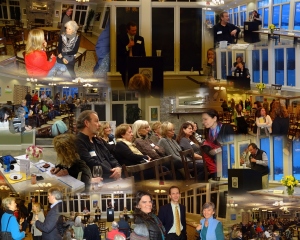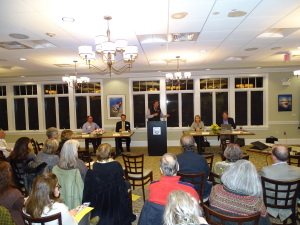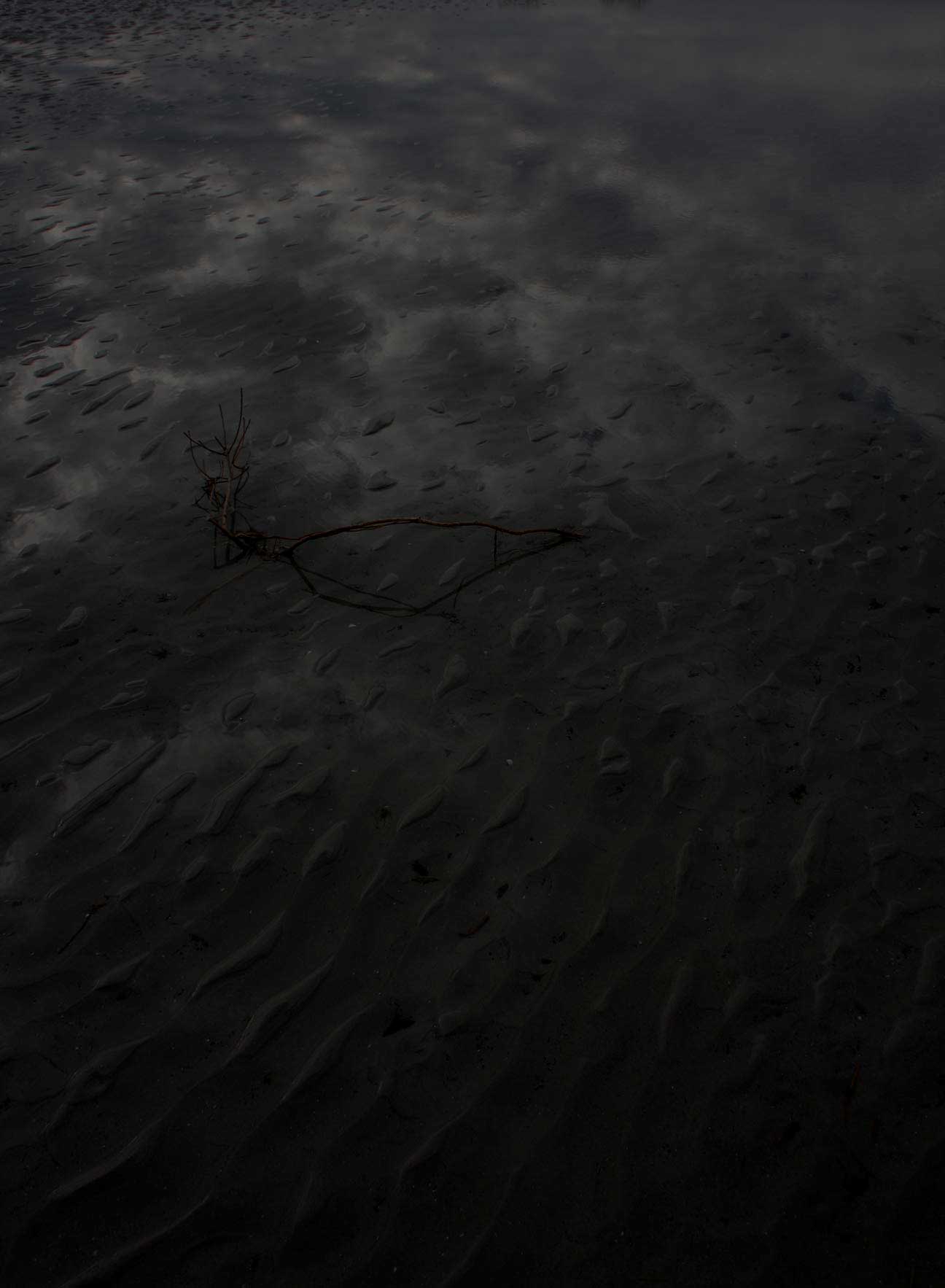 seARTS Biz:
seARTS Biz:
After a very social 40 minutes with a crowd nearing 100 attendees, we all sat down to take care of “Business” and get an update on the 2014 happenings. With a series of unanimous votes, seARTS officially welcomes Anita Blackaby as its new Vice-President and new Board members Carolyn Fuchs, Chuck Hayback, and Sam Gagliardi. We send our thanks to former Board members, Matt Cegelis, Kris Fisher and Susan Boles. seARTS produced a year end newsletter full of wonderful accomplishments by its arts and cultural members – For a copy of the Newsletter in a PDF form click here or request a hard copy by calling the office. Many thanks to all the contributors!
Hayback, and Sam Gagliardi. We send our thanks to former Board members, Matt Cegelis, Kris Fisher and Susan Boles. seARTS produced a year end newsletter full of wonderful accomplishments by its arts and cultural members – For a copy of the Newsletter in a PDF form click here or request a hard copy by calling the office. Many thanks to all the contributors!
Expert Panel:
Matt Swift from Trident Gallery led the evening’s discussion “The Pulse of Cape Ann Art.” The audience was full engaged as Matt ran through candid remarks about what’s really happening and the many challenges of making a living as an artist or in the art eco-system. “What is our legacy?” “Can the community hold on to an identity that we have outgrown?” were themes that floated to the top several times by several speakers. The major accomplishment of the last ten years was to get a seat at the table, so now what do we want to do with it? Each speaker took a slightly different tack on addressing the key issues of the day – organic tourism, cultural tourism, and creative place-making among the terms that were used to describe some of the initiatives going on here and other transformative communities.
 We learned from Tom Daniel that community development includes arts, but isn’t fully focused on arts. It’s up to the arts community to continue to influence projects in a way that will be inclusive of the artists but not exclusive of other groups. Tom also pointed out that community development involves both policy making and regulatory work that must happen behind the scenes to enable a vibrant entrepreneurial climate. Collaborative workspaces are among the current initiatives.
We learned from Tom Daniel that community development includes arts, but isn’t fully focused on arts. It’s up to the arts community to continue to influence projects in a way that will be inclusive of the artists but not exclusive of other groups. Tom also pointed out that community development involves both policy making and regulatory work that must happen behind the scenes to enable a vibrant entrepreneurial climate. Collaborative workspaces are among the current initiatives.
Rich Maloney reviewed his research from 2008 – where he pointed out the important roles that local arts leaders play in moving things along. He put a spotlight on the impact key partners, government, local colleges, media, and granting organizations can play alongside local champions. He pointed out that the MCC does much more than hand out money. Through forums, workshops, consultations, best practices, research, and personal efforts by their team, the MCC provides the support needed to be effective with the grants they are providing.
Local Arts Champions:
The Audience was bursting with its own ideas around important initiatives that are at different point in the development continuum. Though the speaker were asked to address Public Art, it was widely acknowledged that this needs a more robust forum of its own. Clearly, as Tom Daniel pointed out, the Gloucester Committee for the Arts has heard the outpouring of interest the need for a policy. Then, the issue of what type of art is appropriate – yet another dimension of the discussion. Cultural district tax incentives were mentioned by Karen Ristuben who has been informed of great progress on this front by representative Ferrante. The role of the Tourism Commission was discussed vis-à-vis the arts and cultural community. Katherine Ryan and Karen Ristuben presently the voice of the arts for that body.
What we can learn from other communities:
There is always a call to learn from others who are successful. From the floor this question was raised and among the ideas discussed was one of putting arts literature where people are naturally gathered already as they come to Cape Ann – beaches, for example! What about arts ambassadors – an obvious T-shirt or bumper sticker that allows visitors to reach out to local experts for advice? And of course, one of the key notions – a city-supported arts position that helps tie together the strategy for many of these initiatives long term. Clearly there is a deep resource with the MCC to learn more from the 101 communities they have supported!
